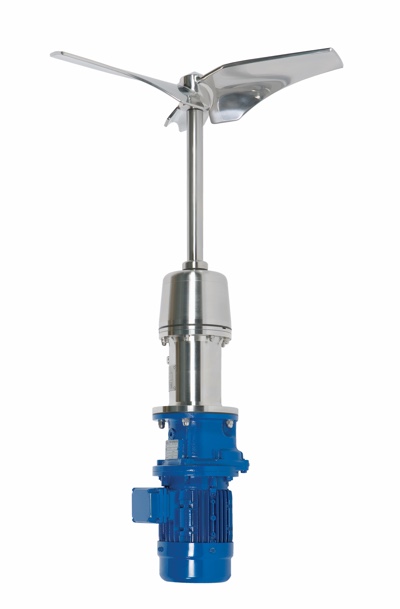Mainstream frozen desserts are still a staple, but more informed and health-conscious consumers are shifting to upmarket treats with natural and unusual ingredients. Ice cream portfolios now include lactose-free, soy-free, organic, minimally processed components and various mix-in flavour combos to suit indulgent tastes. To stay competitive, manufacturers must adapt production lines to meet consumer demand while keeping cleaning cycles as short as possible.
Producing the ice cream mix requires a high degree of flexibility and efficiency; the process line handles a variety of dry and liquid ingredients, must adapt to fluctuations in seasonal demand, and create an innovative, varied product portfolio.
To extend shelf life, manufacturers ensure formulation quality by adding ingredients that prevent ice crystal formation during storage. These items require several hours after dispersion to achieve full hydration.
Commercial pasteurisation of liquid food products generally takes place prior to packaging to prevent contamination by microorganisms; the ice cream mix is an exception. It is kept under slow agitation in a refrigerated maturation tank for 4-24 hours without any further treatment prior to freezing. This ensures proper fat crystallisation and hydration of functional ingredients, which is essential for the final quality and storage properties of the ice cream.
During the hours long storage, the pasteurised ice cream mix is highly sensitive to contamination. Any residue left in the maturation tank after cleaning can promote the growth of psychrophilic microorganisms such as Listeria monocytogenes; a foodborne pathogen, it caused a deadly listeriosis outbreak in the US in 2015 when processing equipment contaminated products of a major ice cream maker, prompting a nationwide recall. The incident sent shock waves through the industry and underlined the importance of the hygienic design of processing and CIP equipment.

The special overlap-free design of Alfa Laval Ensafoil agitators reduces cleaning time and improves plant efficiency
Maturation tank hygiene
The standard design for ice cream maturation tanks is an insulated cylindrical vessel equipped with a chilled water jacket and top-mounted agitator.
The typical tank size for industrial lines is between 2–6 m3, although larger tanks can be up to 20 m3.
Static spray balls are often used to clean these tanks, but due to the immovable nature of the equipment, it is difficult to flush all of the tank and equipment surfaces with cleaning fluid.
Moreover, due to the high fat content, sticky consistency and frequent presence of particles, such as chocolate flakes and fruit bits, these tanks are difficult to clean, especially underneath the agitator blades.
To ensure thorough cleaning, additional water, cleaning agents and time are required; this impacts plant output and profitability.
The use of high-impact rotating jet spray devices, such as Alfa Laval Rotary Jet Heads, can reduce cleaning time and improve plant efficiency.
Rotating spray devices move in 3D patterns and use impingement as the primary cleaning parameter to remove even the most difficult residues in a fraction of the time required by static spray balls: rotary jet head technology can reduce water and chemical consumption by up to 70% compared with traditional spray ball technology; it reduces cleaning cycle times by more than 50%.
Optimising agitator cleaning
Cleaning the underside of the agitator is the most critical aspect of cleaning in place (CIP) for maturation tanks, as it is not directly exposed to jet spray from the tank top. It is important to use mixers and agitators with open, easy-to-clean designs and Alfa Laval agitators featuring EnSaFoil impellers are made with this in mind.
These agitators have no overlap between the blades and eliminate blind spots that are not reached by the cleaning fluid during CIP. The unique profile of the front end of the impeller blade enables the high-impact jets of the CIP fluid to clean the underside of the blade.
The design and slow rotating speed allows an axis length of up to seven metres without requiring any bottom connection. The impeller blades ensure viscous mixes are homogeneously blended while keeping energy consumption to a minimum.
To ensure food safety, quality and productivity, it’s essential to develop hygienic equipment design and strict cleaning procedures throughout the entire manufacturing process.
Shorter, more efficient cleaning cycles of ice cream maturation tanks are key to higher capacity and higher yields. Using easy-to-clean Alfa Laval agitators with EnSaFoil impellers with the Alfa Laval Rotary Jet Head cleaning systems help reduce cleaning cycle downtime without compromising product quality or consumer safety.
